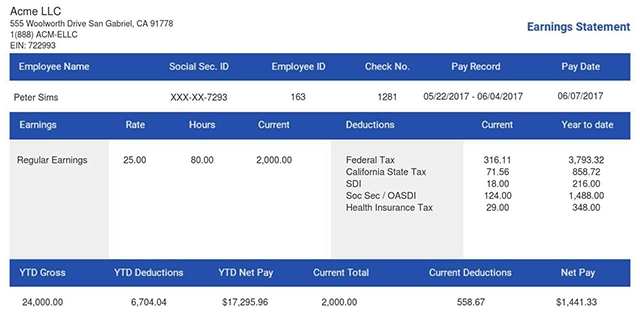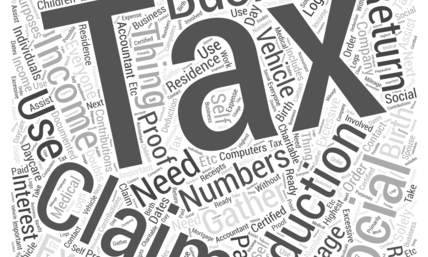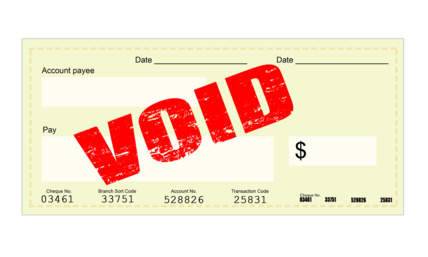How Does 2 Week Pay Work? - What to Know
When you start a new job, there are lots of questions that you might be wanting to ask. A lot of the time, the majority of these questions revolve around pay. After all, one of the main factors that might drive you to apply for that job could be the money that you are getting paid for it.
These questions could include all sorts of things, such as how you will receive your paycheck, and when you will receive it. There are quite a few different ways that you will receive your paycheck, and the pattern in which you will receive it differs a lot too. On receiving your pay check you will be able to see clearly all the mandatory deductions from your pay. You can generate these pay checks online very easily using our online check stub maker.
In this guide, we’ll be specifically taking a look at 2 week, or bi-weekly pay, to understand how it works, and how a company decides to go down this payment route. So, if you want to find out more, keep on reading.
Also read: What Are The Ways To Better Manage Payroll In Your Business?
What is Bi-Weekly Pay?
First things first, let’s take a look at how 2 week, or bi-weekly, pay works. As the name suggests, 2 week pay is a payment route that employers can choose if they want to pay their employees once every 2 weeks. This means that across the year, you will receive 26 paychecks, rather than the 12 paychecks that you would receive if you were paid monthly.
When you are paid on a bi-weekly basis, you will receive less money on each paycheck than if you were paid monthly. This is because your wages are divided across every other week of the year. There are 52 weeks in the year, so when you divide this by 2, you end up with 26 weeks upon which you will receive your pay.
One of the biggest misconceptions that people have regarding bi-weekly pay is that they will be paid twice a month. This is often the case, but sometimes you will be paid more regularly than this. That is because bi-weekly pay is divided across the 52 weeks, rather than each month. So, occasionally, you could end up receiving 3 paychecks in a single week. But, how does it work? Let’s take a look.
Also read: 10 Things You’ll Need from Each Employee to Achieve Efficient Payroll Processing

How does 2 Week Pay Work?
So, as we have said, 2 week pay is a payment option for employers. If an employer chooses to pay their employees on this payroll cycle then the employees will receive a paycheck once every 2 weeks. This does not mean that they will receive 2 paychecks every month. Instead, it means that they will receive a paycheck once every 2 weeks. This can frequently result in employees receiving 3 or even 4 paychecks in a single month.
But, how does 2 week pay work? Once the company has decided to go down a bi-weekly payment route, the company’s payroll department or an accountant will run the payroll once every 2 weeks. Most of the time, the company will choose a specific day of the week upon which they will run the payroll. Then every other week, the payroll will be run, and every employee will be paid.
The day of the week upon which you will be paid will always be the same. A lot of the time, companies will choose a Monday or a Friday for the payment day. Then every 2 weeks, you will be paid on this day. If there are 5 Mondays or Fridays in that month, you could then receive 3 paychecks within a single month. That is how 2 week pay works.
Also read: What Are Employment Verification And Proof Of Income Documents?
How Does it Differ from Other Payroll Options?
Now that we know what 2 week pay is, and how it works, let’s take a look at how it differs from the other major payroll options. Aside from bi-weekly pay, there are 3 other payment options that many companies choose to use, they are:
As the name suggests, monthly pay is a payment route where employees will be paid just once a month. This means that they will receive 12 paychecks throughout the year. These paychecks will have a higher monetary value than bi-weekly paychecks, and they will be paid on the same date every month.
In contrast, the semi-monthly payment route means that employees will be paid twice a month. This is the payment route that is most commonly confused with bi-weekly pay. Bi-weekly pay will result in you having 26 paychecks throughout the year, but semi-monthly will result in you receiving 24 paychecks a year. This is because you will receive 2 paychecks a month, rather than a paycheck every 2 weeks. With this payment route, set dates will be chosen (i.e., 3rd and 19th) and you will be paid on these dates every month.
The final payment route that many companies choose is weekly pay. As the name suggests, with this payment route, employees will be paid on a set day of the week, and they will then be paid every week. This means that every employee will receive 52 paychecks a year. The amount that they are paid each week will be less than if they were paid monthly, but the payments will be more frequent.
Also read: Working On Payroll Jobs

The Benefits and Drawbacks of 2 Week Pay
It is clear to see how 2 week pay differs from the other payment routes that we have looked at, but now let’s take a look at why so many companies choose this payment method. To do this, let’s take a look at the benefits and drawbacks of 2 week pay.
Benefits
-
Regular Payments
One of the clearest benefits of 2 week pay is that you will be paid more regularly than if you are paid monthly. This means that there will be a shorter period of time between paychecks, so managing your money (and unexpected expenses) will be a lot easier.
-
Quicker Access to Overtime
If your company offers overtime, you will get access to your overtime pay much quicker when paid bi-weekly. Instead of having to wait until the end of the month to get access to your extra pay, you will receive it every other week.
Drawbacks
On the weeks of the year when there are more than 2 payment days in a month, calculating tax can be very difficult. So extra care will have to be taken to ensure that you do not make any mistakes when paying your taxes for that paycheck.
-
Can Confuse your Budget
Finally, bi-weekly paychecks can confuse your budget because in some months you will receive more than 2 paychecks. So, you will end up with more money than you would’ve expected in one month, and less in the next month. This can make budgeting things rather difficult.
These benefits and drawbacks will influence the payment route which a company goes down. But, their decision will also be affected by other things such as the number of employees that they have, whether employees are salaried or paid hourly, and if overtime pay is offered. Once all these factors have been considered, employers will then decide if 2 week pay is the right route for them and their employees.
Also read: Who Is Responsible For The Payroll?

Summary
In short, 2 week pay is a payment method through which employees will receive a paycheck once every 2 weeks. This means that they will end up receiving 26 paychecks a year, and these will be paid on the same day every other week. It is a popular payment route for many companies, and you can find out why by checking out the guide above.















